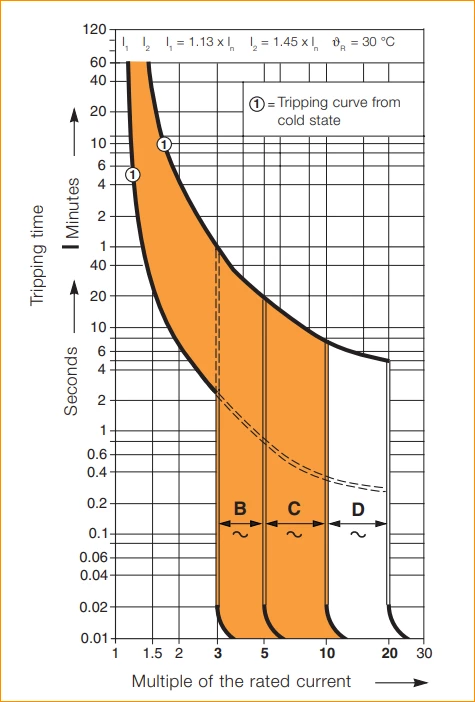Circuit breakers MCB and MCCB
Circuit breakers are an essential part of electrical systems, designed to safely and reliably switch off an electrical circuit during abnormal
conditions such as overloading or fault conditions. Among the most popular types for low-voltage use are Miniature Circuit Breakers (MCBs)
and Molded Case Circuit Breakers (MCCBs).
MCBs are typically used in residential and small commercial settings. They come in various poles, with 2 poles used for the phase and neutral line,
3 poles used to connect the 3-phase, and 4 poles used to connect the 3-phase and neutral at the same time. The anatomy of an MCB includes a cable
terminal to connect the cables to the breaker, an operating handle to control the brake on, off, and reset, and a contact. It also has a coil assembly
and a bi-metal thermal element. The coil assembly is used for fast disconnection, in case of a short circuit, the current passing through the circuit
breaker will be so high that it produces a high magnetic field in the magnetic coil, which raises the lever to turn off the power from the circuit.
The bi-metal thermal element is used for thermal disconnection. MCBs also have a DIN rail mounting to connect to the rail in the circuit breaker's
panel and an arc chamber used for dumbing the arc produced by the cutoff and reconnect.
working principle

The working principle of an MCB is based on a tripping curve (shown in the figure ), with the circuit
breaker working smoothly before the thermal trip (in the figure indicated as tripping curve from cold state).
After that, the thermal trip will start, and it will cut off the power in a certain period of time indicated
in the time axis. Keep in mind that the thermal trip is not a short circuit; it's when the current passing
in the circuit is higher than the rated amperes and lower than the short circuit, and it's the bi-metal thermal element's duty.
After that period, the fast trip starts, and that's the duty of the magnetic element or the coil assembly.
From the graph, the circuit breaker can be divided into types B, C, and D, each with different ratings and short circuit types.
Type B will cut off the current after the current passes three to five times the rated current, and it's used for resistor load.
Type C will cut off the current after the current passes five to ten times the rated current, and it's used for an inductive load
like motors. Type D will cut off the current after the current passes ten to twenty times the rated current and it's used for high
inductive load.
MCCBs, on the other hand, are mostly used for 3-phase connections and have similar characteristics as MCBs, with the added
ability to reconfigure the cutoff amperes in the thermal period and in the speed cutoff period. They are typically used
in industrial settings.
conclusion
In conclusion, circuit breakers are an essential component of electrical systems that ensure safety and reliability by
switching off power during abnormal conditions. MCBs and MCCBs are the most popular types for low voltage use, with different
characteristics and uses depending on the specific application. It's important to select the right type and rating of circuit
breaker for your specific needs to ensure optimal performance and safety.